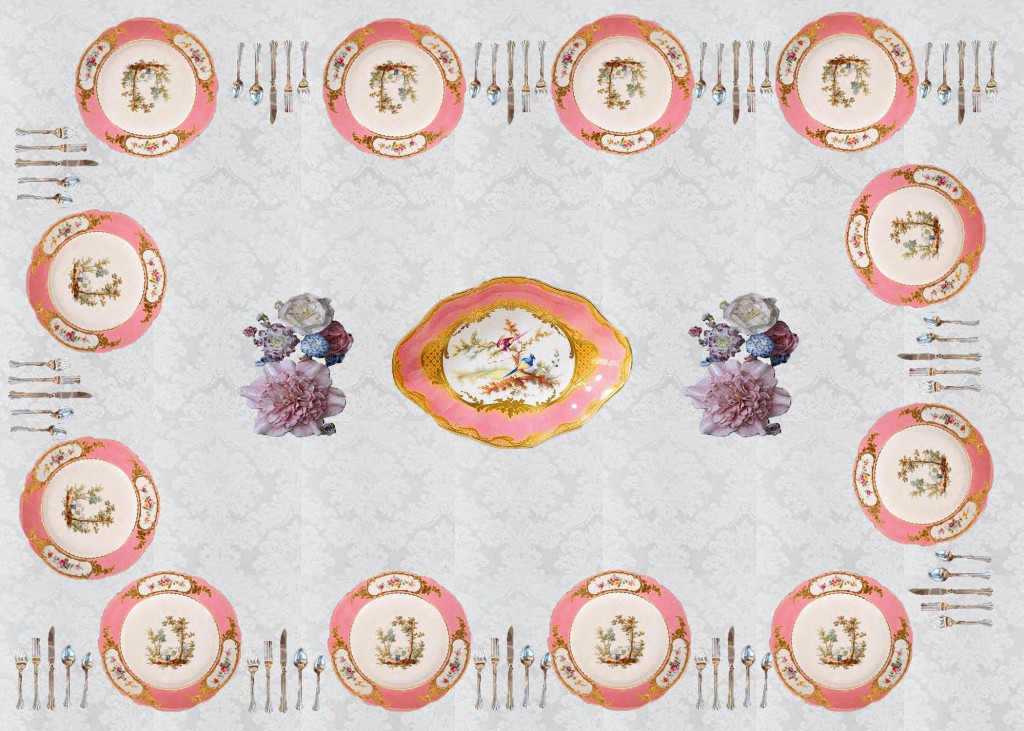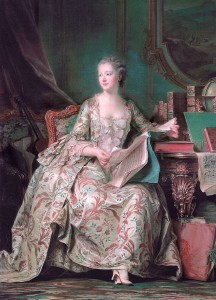roz pomp-ah-dour
 Her Passion for Porcelain
Her Passion for Porcelain
Rose Pompadour is the pink ground color invented by Sèvres in 1757. Madame de Pompadour, the mistress to Louis XV from 1745-1764, became a great supporter of the porcelain made at Sèvres, and it is in her honor that this color was named. Chemist Jean Hellot is responsible for the inventive palette of the Sèvres colors created in the eighteenth-century, including Rose Pompadour; Hellot had a deep understanding of the materials used in the recipe for the soft paste porcelain made at Sèvres, as well as the fondant (the primer glaze first applied), and it was this knowledgeability that led him to the discovery of five of Sèvres colors that arguably came to define magnificence in eighteenth-century France. What made Rose Pompadour so luxurious in aesthetic was its vivacity and beauty.

This image is meant to act as a visual guide for viewers to see a set of Sèvres plates together in a dining setting that is historically accurate in regards to eighteenth-century customs. This table setting displays twelve rose pompadour plates atop a white damask table cloth in partnership with silver eighteenth-century cutlery, with a centerpiece of two Vincennes porcelain flower arrangements flanking a rose pompadour Sèvres serving platter.
To create Rose Pompadour, the recipe has a base of Purple of Cassius, but followed more closely to colloidal sol of gold, which gave the pink a blush tone. (Sn^2 + 2Au+ –> Sn^4+ + 2Au ^0)
Madame de Pompadour is remembered as the primary figure of establishing Sèvres porcelain as the luxury object of choice throughout the eighteenth-century. An infamous story about her attempts to bring Sèvres porcelain into the favor of King Louis XV was her commission of an interior garden comprised of all porcelain flowers; when the King entered the room he was amazed and amused, and even more so when he went to pick a flower to find it was made of brilliant Sèvres porcelain. In 1753, the King allowed the factory to be called a Royal factory and the Sèvres factory joined Gobelins in its entitlement to royal protection and patronage.

